Let’s talk about poop! It is more common to talk about diarrhea in dogs. Yet, it can also happen that your dog does not defecate.
Do you know how long a dog can go without pooping? We will address this issue and explain the situations you should not worry about and when you can no longer avoid consulting a veterinarian.
How Often Should a Dog Poop?
A common concern of pet owners is how many times a day should a dog poop? It is a frequent question in veterinary hospitals. Dogs usually defecate once or twice, even up to three times daily.
The frequency at which a dog defecates varies depending on several factors, such as diet, activity level, metabolism, breed, and age.
Diet
Some dogs poop after meals, correlating with their feeding schedule. If fed twice daily, they may poop twice. Likewise, once-a-day feeding often results in one daily poop. Reduced eating can lead to decreased pooping. Adjusting feeding frequency can alter stool patterns [1].
Quality food impacts bowel movement frequency. High-quality foods are nutrient-dense, requiring less consumption and resulting in fewer stools. Conversely, by-product and flour-heavy foods leave more undigested residue, increasing pooping frequency. Fiber-rich diets also promote more frequent bowel movements [2].
Physical Activity
Regular exercise stimulates bowel movements and supports healthy digestion. A sedentary lifestyle can lead to constipation and slow bowel movements.
Breeds and Metabolism
Small breeds such as Chihuahuas, Yorkshires, and Dachshunds’ metabolism and bowel movements are faster than large and giant breeds. Therefore they defecate more often than breeds such as Great Danes, St. Bernards, and Rottweilers.
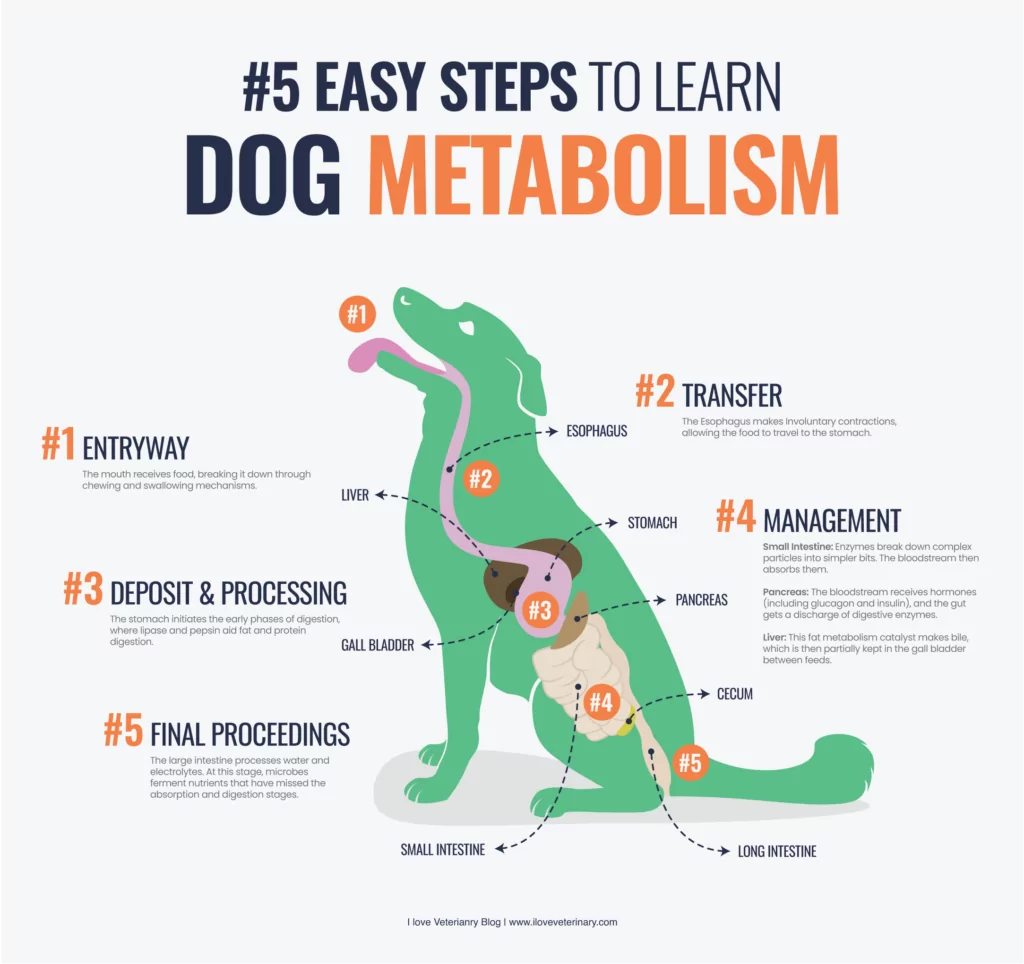
Puppies vs. Adults
Due to their higher metabolism and activity, puppies defecate more often than adults. Most puppies need to poop within an hour after eating, so this is the perfect time to take them outside.
Stool Consistency
The consistency of a dog’s stool is also an important indicator of its health. Normal stool should be firm, moist, and easy to pick up. Soft or watery stools can mean digestive or other underlying health problems.
How Long Can a Dog Go Without Pooping?
It’s challenging to pinpoint an exact answer. Dogs naturally vary in stool frequency.
Owners must understand their dog’s usual habits. If a dog typically defecates three times daily, a day without bowel movements is unusual. Conversely, if an older, large breed dog defecates only once daily, four bowel movements would be atypical.
Paying attention to discomfort during defecation is crucial. While bowel movement frequency can vary, pain or difficulty, along with watery or bloody stool, signal issues.
Knowing your dog’s baseline helps detect changes like constipation or dog diarrhea.
While every dog differs, if a dog surpasses two days without bowel movements, it could signal constipation. Constipation in dogs, characterized by difficulty passing stool or infrequent bowel movements, can escalate into serious health concerns if not addressed promptly.
What is a Normal Interval Between Poops?
For puppies needing frequent meals, expect pooping every 6-8 hours. Adult dogs typically poop every 12-24 hours as their metabolism slows.
Young, active dogs or those on high-fiber diets may poop more frequently. Most adults poop daily.
What happens if my dog hasn’t pooped in two days, feels discomfort, doesn’t eat its food, or even vomits? In these cases, going to the vet and asking for help is important.
14 Common Causes of a Dog Not Pooping
When wondering how long a dog can go without pooping, it is essential to consider the factors that cause this delay. The most important are:
Constipation
A constipated dog cannot defecate because the stool is hard and dry. The poop accumulates in the colon, and expulsion is very difficult.
When a dog cannot poop, we immediately think of constipation. Yet, we will list below other common causes that can lead to your pup not being able to poop.
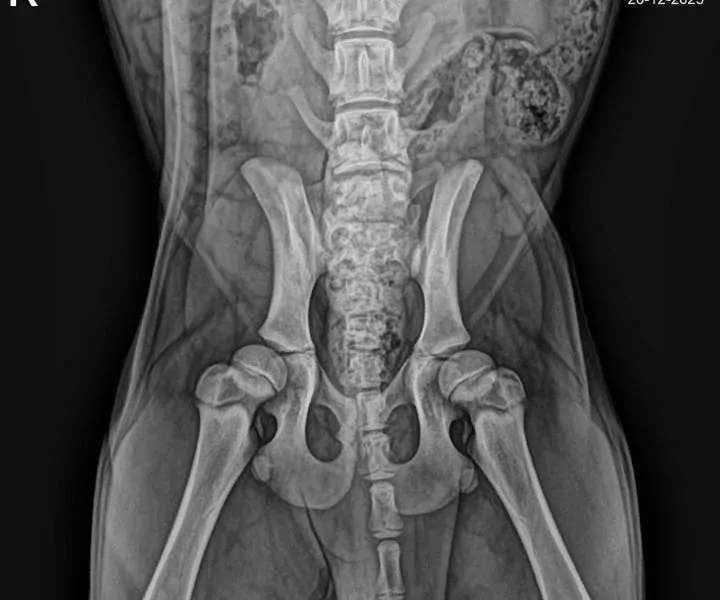
Dehydration
The colon’s main function is to absorb water and electrolytes from the feces. Dehydration in dogs occurs when the animal loses more fluids than it takes in. In a dehydrated dog, the absorption of fluids from the colon will be greater to recover as much water as possible. As a result, it will have difficulty excreting the dried poop.
Foreign Objects
In veterinary medicine, a foreign body is any object that the dog can swallow and is not able to digest. Examples of foreign bodies are bones, toys, plastics, etc.
A dog that swallows a foreign body is in serious trouble and requires emergency medical attention. Foreign bodies get stuck somewhere along the digestive tract, obstructing it. Bowel movements stop, and the intestinal contents can no longer move forward.
Insufficient Fiber
Fiber is a component of food that attracts water in the intestine. As a result, fiber increases the volume of the stool, softens it, and accelerates intestinal transit. Lack of fiber hinders the passage of food through the digestive tract.
Excessive Fiber
Fiber is important for dogs’ digestive health, but it can be counterproductive if a dog’s diet contains too much fiber. Because insoluble fiber attracts water into the intestine, large amounts of fiber will produce huge amounts of poop that are difficult to pass. They will also cause abdominal distention, discomfort, excessive fermentation, and gas.
Abnormal Anal Glands
The anal glands, situated on either side of a dog’s anus, produce a smelly fluid aiding fecal passage. Obstructions, infections, abscesses, or tumors in these glands cause pain, hindering pooping. Feeding high-fiber dog food can alleviate this problem.
Tumors
Masses located in the anus or somewhere along the intestinal tract may obstruct or make it more difficult to pass stools.
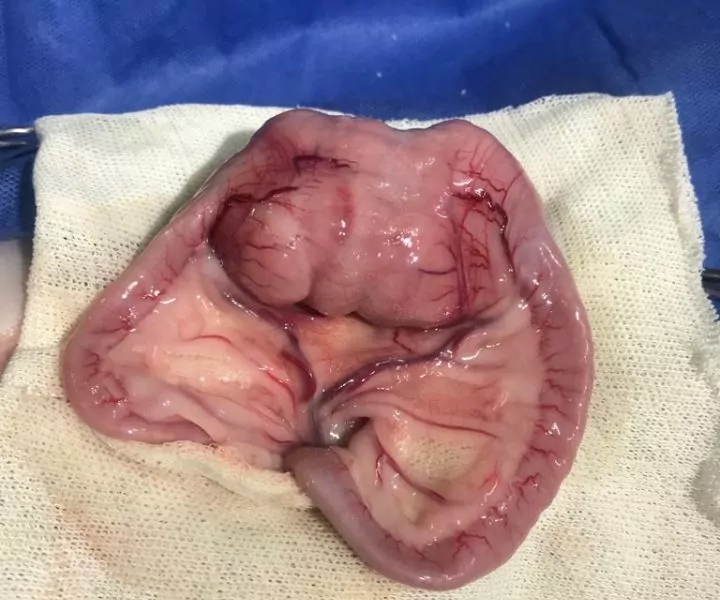
Over-Matted Fur
Curly-coated dogs may have problems defecating if their hair clumps around the anus area. It is a common problem in Poodles with long hairs in the genital area.
Prostate Issues
Unsterilized male dogs with prostate inflammation or deformities may have problems defecating due to the anatomical location of this gland. The prostate lies below the rectum. When the prostate enlarges, it can press on the rectum and make it difficult to pass stools.
Endocrine Issues
Some endocrine diseases, such as canine hypothyroidism and diabetes, can cause difficulty pooping as a secondary symptom. In hypothyroidism, the body’s metabolism (speed) and bowel movements slows down. In the case of dog diabetes, secondary dehydration is the cause of the difficulty in having a bowel movement.
Kidney Failure
Damaged kidneys cannot keep water, leading to dehydration.
Diarrhea
Why isn’t my dog pooping? This is common after diarrhea and owners may overmedicate to control it.
Normal for dogs not to poop one-three days post-diarrhea as the GI tract clears. Food takes days to travel from stomach to rectum
Recent Surgery
Do not worry if, after surgery, your dog does not poop at their usual times. Several reasons will cause your dog to take a little while to regularize its defecation schedule:
- They will avoid moving because of the pain.
- Slowing of bowel movements due to less physical activity.
- Some anesthetic and analgesic drugs have the side effect of slowing down the movements of the digestive tract.
- Using an Elizabethan collar, bandages, or post-surgical dressing can generate initial discomfort.
Lack of Exercise
Regular physical activity stimulates bowel movements and helps prevent constipation.
Incorrect Diet
Diets high in fat and lacking fiber can slow intestinal movement. Abrupt changes in the dog’s diet can alter the balance of intestinal flora and cause constipation.
Deformity of the Pelvic Area Due to Badly Resolved Fractures
When the bony anatomy of the hip is no longer normal, it can compromise bowel transit, making it difficult to pass stool.
Health Risks Associated With Irregular Bowel Movements
Understanding how long a dog can go without pooping is crucial due to the serious health implications that follow inactivity. Failure to act can lead to fatal consequences.
The health risks of irregular bowel movements in dogs include:
- Pain and discomfort: Abdominal discomfort, inflammation, loss of appetite, vomiting, difficulty defecating, crying during bowel movements, and presence of blood or mucus in hard, dry stool.
- Fecal impaction: Accumulation of hard, dry stool in the rectum leading to intestinal obstruction [3].
- Megacolon: Severe abnormal enlargement of the colon caused by fecal accumulation.
- Intoxication: Absorption of toxins from the intestine due to the inability to defecate, leading to health issues.
What to do if Your Dog is Not Pooping
No magic formula exists to make a constipated dog poop quickly. Identify the cause and prevent recurrence. Untreated constipation can harm health.
Let’s learn how to help a puppy not pooping.
Diet
You could supplement your dog’s diet by adding fiber to regularize digestion and promote defecation. You can use commercial kibble formulas with more fiber or add vegetables and fruits to your pet’s diet.
Another excellent option is to add wet dog food to the diet as it will provide more moisture.
Vet Approved RX – Vetasyl Fiber Caps 100 Count
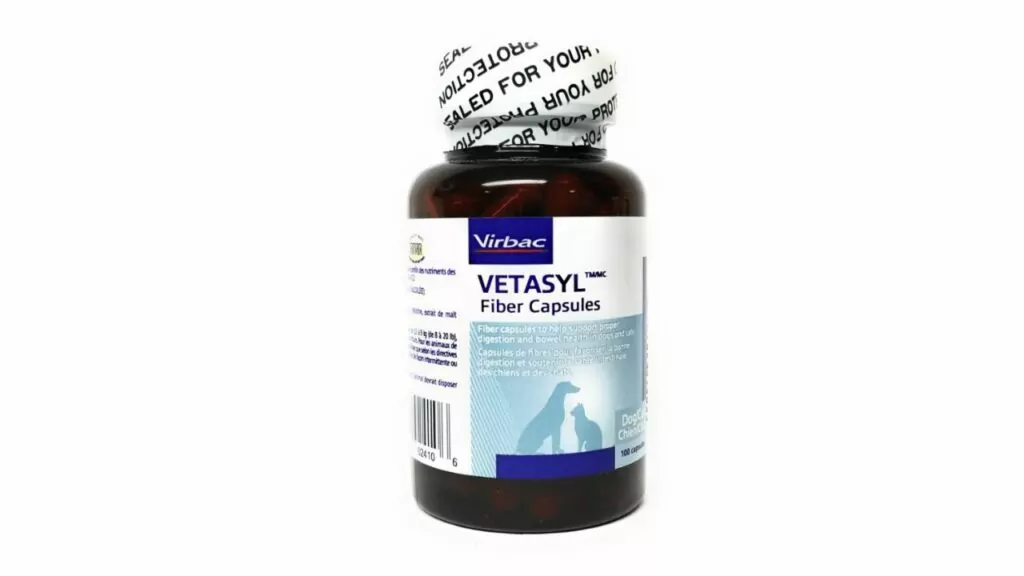
Exercise
Exercise stimulates the gastrointestinal tract muscles, which help move food through the digestive system. Besides, physical activity increases blood flow to the intestines, facilitating digestion and promoting regular bowel movements.
Thus, it is important to provide your dog with daily exercise opportunities, such as dog walks, games, or interactive toys that encourage movement.
Canned Pumpkin
One of the easiest and most common home treatments for constipation in dogs is to give them canned pumpkins. Pumpkin is a high-fiber food and is safe for dogs. The dosage is 1 tablespoon daily for small breeds and 3 tablespoons for large dogs. You can mix it with food or give it as a treat.
No products found.
Water
Increasing the amount of water the dog drinks is important when adding fiber to the diet. Fiber draws extra fluid into the stool to soften it. If water is unavailable, increasing fiber can worsen constipation.
You can place several dog water fountains in different parts of the house. Another option is to offer chicken broth to drink or add water to your dog’s wet food.
- PREVENT & RELIEVE DOG DIARRHEA: Our pumpkin dog fiber supplement is designed by a leading veterinary nutritionist to ensure effective doses of fiber to help (not hurt!) the digestion process. A better option than expensive or ineffective dog diarrhea medicine!
- 3 ORGANIC INGREDIENTS & MADE IN NORTH AMERICA: Our recipe uses only organic pumpkin, pumpkin seed, and apple powders to create a high fiber supplement for dogs that provides all-natural digestive support and relief.
Regular Vet Check-Ups
Scheduling regular veterinary check-ups and preventive care is essential to track your dog’s health and identify any underlying medical conditions affecting bowel movements. Your veterinarian can recommend a diet appropriate to your dog’s needs and prescribe any necessary treatments or interventions.
Stool Softener
In some cases, it may be necessary to add a stool softener or a dietary supplement recommended by your veterinarian if your dog goes for prolonged periods without pooping or if they have hard stools.
These supplements increase the moisture content of the stool, making it easier to pass. Olive oil and psyllium are some examples of natural stool softeners.
Petco – NaturVet Stool Ease Stool Softener Dog Soft Chews, Pack of 40 chews
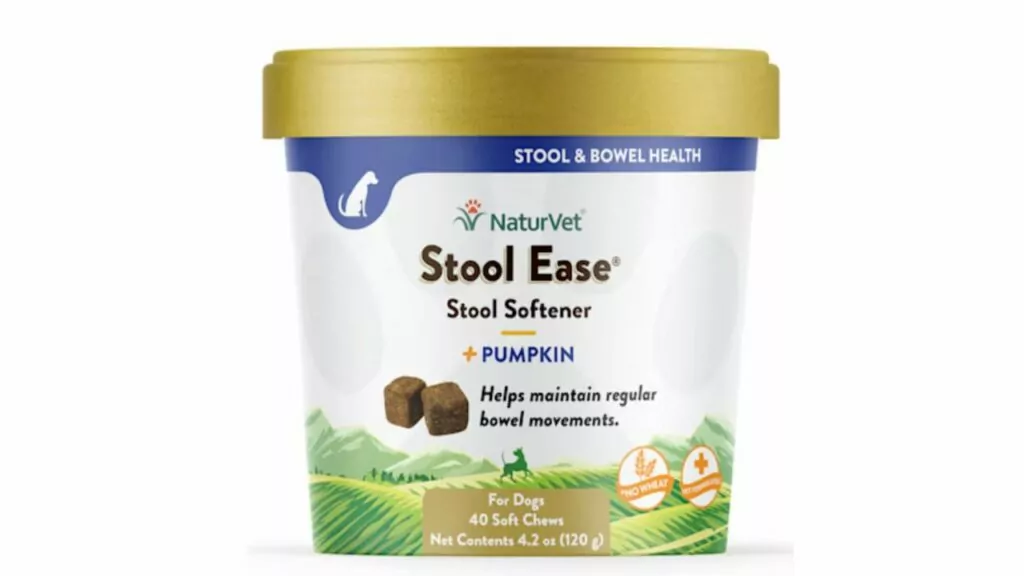
Enema
If your dog does not respond to these treatments, you may need to take it to the veterinarian for an enema. Never perform an enema on your dog without the supervision of a professional.
When to Contact the Vet
If your dog hasn’t pooped for more than two days, consult a vet. Even if they seem fine, it’s wise to seek advice. Immediate attention may be needed for serious issues.
Conclusion
In summary, dogs can occasionally go a couple of days without pooping, but prolonged periods can cause complications.
It’s crucial to explore the risks of extended periods without bowel movements to grasp the implications and concerns.
Understanding these dynamics is vital for our canine companions’ well-being and digestive health.
How Long Is Too Long for a Dog Not To Poop?
As a general guideline, more than 72 hours without pooping is too long.
What Happens If a Dog Holds His Poop For Too Long?
If a dog does not poop for several days, it can have health complications ranging from pain, discomfort, and dehydration to intestinal obstruction, megacolon, and intoxication.
How Long Can a Dog Hold Their Bowels?
The amount of time a dog can keep poop without cause for concern is approximately 48 hours. This period varies according to the dog’s age, breed, diet, and general health.
How Can You Tell If a Dog Has a Blockage?
The most characteristic symptom of intestinal blockage in dogs is vomiting with a poopy odor. If the intestinal obstruction is total, the dog cannot defecate.
If the obstruction is partial, some intestinal contents continue to pass, and the dog usually has diarrhea. There is also abdominal pain, weakness, anorexia, and dehydration.
How Long After a Dog Eats Does It Poop?
A dog usually defecates eight to 12 hours after eating.

